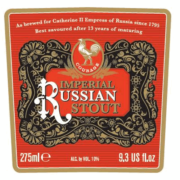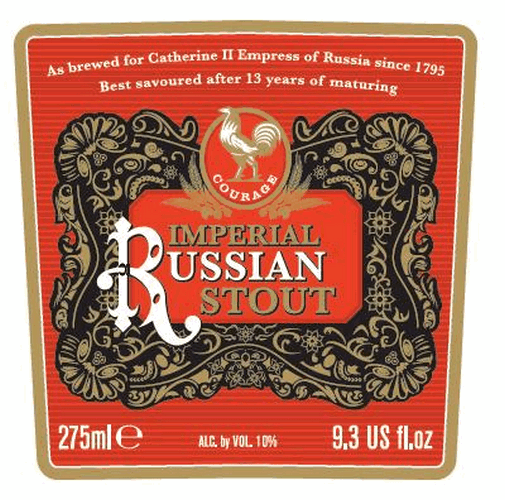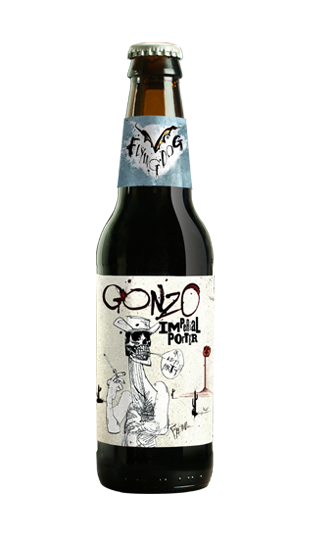Home Brew Imperial Clone Recipes
Whilst I’m not particularly fond of the term “imperial” which seems to get attached to any beer that is of higher strength than the norm, I must say I like the challenge that faces the brewer in brewing one.
Of course when you call a beer imperial you immediately think of Stout brewed for the Tsars of Russia. The “imperialisation” of all kinds of beers has become more and more popular so now you may find IPA’s, Pilsners, Brown Ales and Porters as well as the more traditional stouts.
Like most beers that are out of the ordinary or pushing the boundaries you get an army of home brewers trying to recreate them. Looking at the breweries websites in some cases together with stuff I’ve researched about each of the beers, I have come up with a selection of recipes for some great examples of imperial clones. These aren’t going to be exact clones, think of them as interpretations of the original beers.
If you are thinking brewing these or any other recipes with a big ABV I would recommend making a pretty big yeast starter that will be able to cope with the high levels of alcohol.
Table of Contents
Imperial Clone Recipes
Courage Russian Stout
A legendary beer by any standards and one that completely disappeared in the 1990’s. The brand was revived in 2012 and a small release of bottles is brewed every year by Charles Wells brewery.
Russian imperial stouts were originally brewed in the 18th century in England for export to Catherine II of Russia’s court.
There are lots of vintage bottles gathering dust in people beer cupboards around the country so I’ve created a clone so anyone can enjoy a Courage Russian Stout
The powerful imperial version of stout was brewed for the Baltic trade and was popular at the court of the Russian Tsars. The beer that became Courage Russian Imperial started life in the Anchor brewery run by the Thrale family.
Barclay’s Imperial Russian Stout had a long journey from London to Danzig and then into Imperial Russia, a journey made even more hazardous when the Baltic ports were blockaded by the French during the Napoleonic Wars. When the Russian trade dried up, Barclays – subsequently bought by a Scot of French Huguenot descent named John Courage – continued to brew small batches of Russian stout for the home market. – Thrale
Batch Size: 19 Litres
Brewhouse Efficency: 70%
Original Gravity: 1.107
Final Gravity: 1.027
ABV: 10.6%
Bitterness (IBU): 51.5
Est. Colour (EBU): 126.4
AmountItemType% or IBU
| 6.50 kg | Pale Malt, Maris Otter (5.9 EBC) | Grain | 69.26% |
| 1.04 kg | Brown Malt (128.1 EBC) | Grain | 11.05% |
| 0.69 kg | Amber Malt (43.3 EBC) | Grain | 7.39% |
| 0.57 kg | Black Malt (985.0 EBC) | Grain | 6.07% |
| 0.58 kg | Candi Sugar, Dark (541.8 EBC) | Sugar | 6.23% |
| 54.91 g | Target [11 %] (60 min) | Hops | 51.5 IBU |
Three Floyds Dark Lord
Let’s continue with a massive Imperial Stout, the particular beer I have picked out is Three Floyds Dark Lord. It has a huge following in the US just because of the sheer iconic status of it. It’s only sold on one day of the year and thousands of people turn out for a chance to buy just a single bottle. Take a look at the details on wikipedia:
Dark Lord, described as “a gargantuan Russian Stout brewed with coffee, molasses, and honey; 13% abv.”[2] is the beer for which Three Floyds is most famous, and is rated as one of the best beers in the world [3][4]. It is sold only on ‘Dark Lord Day’, the last Saturday in April. Numbers attending are now limited to 6,000 via pre-sold tickets after crowd control problem in the past.[5]
So onto the recipe, I had a look at a few and there seems to be no consensus on exactly what goes into this recipe. Also there are claims of outrageously high final gravities between around 1.032 up to 1.062 which I seems quite a big range. I have never tried the beer myself so have come up with an interpretation to brew a similar style beer.
Batch Size: 19 Litres
Brewhouse Efficency: 65%
Original Gravity: 1.130
Final Gravity: 1.032
ABV: 13.04%
Bitterness (IBU): 85.2
Est. Colour (EBU): 145.2
AmountItemType% or IBU
| 7.50 kg | Pale Malt (2 Row) US (3.9 EBC) | Grain | 58.37% |
| 1 kg | Barley, Flaked (3.3 EBC) | Grain | 7.78% |
| 1 kg | Mild Malt (7.9 EBC) | Grain | 7.78% |
| 1 kg | Roasted Barley (591.0 EBC) | Grain | 7.78% |
| 750 g | Chocolate Malt (689.5 EBC) | Grain | 5.84% |
| 450 g | Crystal Malt (78.8 EBC) | Grain | 3.50% |
| 250 g | Special B Malt (354.6 EBC) | Grain | 1.95% |
| 600 g | Honey (2.0 EBC) | Sugar | 4.67% |
| 300 g | Molasses (157.6 EBC) | Sugar | 2.33% |
| 90 g | Chinook [13 %] (60 min) |
Pliny The Elder
Pliny The Elder is another iconic American beer that frequently appears in top 10 beer lists. I would call it a double IPA rather than an imperial IPA, not only is the ABV higher than a regular Indian Pale Ale but the IBU is way up there too.
Pliny the Elder was a Roman naturalist, scholar, historian, traveler, officer, and writer. Although not considered his most important work, Pliny and his contemporaries created the botanical name for hops, “Lupus salictarius”, meaning wolf among scrubs.”
For the recipe itself, let’s just call it a hop soup. If you are going to attempt to brew this then I would suggest pellet hops in the brew so that you don’t end up losing half the beer in a mass of whole leaf hops.
Batch Size: 19 Litres
Brewhouse Efficency: 70%
Original Gravity: 1.082
Final Gravity: 1.021
ABV: 8%
Bitterness (IBU): 230
Est. Colour (EBU): 12.7
AmountItemType% or IBU
| 5.65 kg | Pale Malt (2 Row) US (3.9 EBC) | Grain | 81.88% |
| 350 g | Cara-Pils/Dextrine (3.9 EBC) | Grain | 5.07% |
| 160 g | Caramel/Crystal Malt – 40L (78.8 EBC) | Grain | 2.32% |
| 130 g | Wheat Malt, Ger (3.9 EBC) | Grain | 1.88% |
| 610 g | Sugar, Table (Sucrose) (2.0 EBC) | Sugar | 8.84% |
| 58 g | Warrior [15 %] (90 min) | Hops | 95.5 IBU |
| 36 g | Chinook [13 %] (90 min) | Hops | 51.0 IBU |
| 33 g | Simcoe [13 %] (45 min) | Hops | 40.4 IBU |
| 27 g | Columbus (Tomahawk) [14 %] (30 min) | Hops | 29.8 IBU |
| 24 g | Northern Brewer [8.50 %] (15 min) | Hops | 10.4 IBU |
| 36 g | Centennial [10 %] (1 min) | Hops | 1.6 IBU |
| 24 g | Simcoe [13 %] (1 min) | Hops | 1.4 IBU |
| 36 g | Centennial [10 %] (Dry Hop) | Hops | – |
| 36 g | Simcoe [13 %] (Dry Hop) | Hops | – |
| 60 g | Columbus (Tomahawk) [14 %] (Dry Hop 3 days) | Hops | – |
Flying Dog Gonzo Imperial Porter
Out of all these beers Gonzo Imperial Porter is the only one in my local bottle shop and is therefore the one I know best of all. In my opnion its a wonderful beer and that’s why I had to include it.
High ABV porters like these differ to stouts primarily in the choice of grains. Porters using less roasted malts and grains and opting for dark grains like chocolate and black malt.
Like Hunter S. Thompson…Gonzo Imperial Porter is deep and complex. This turbo charged version of the Road Dog Porter is mysteriously dark with a rich malty body, intense roasted flavors, and a surprisingly unique hop kick. With Gonzo weighing in at 9.2% ABV, it will bite you in the ass if you don’t show it the proper respect. IBU’s: 85
Batch Size: 19 Litres
Brewhouse Efficency: 70%
Original Gravity: 1.094
Final Gravity: 1.024
ABV: 9.2%
Bitterness (IBU): 67.8
Est. Colour (EBU): 91
AmountItemType% or IBU
| 7.7 kg | Pale Malt (2 Row) UK (5.9 EBC) | Grain | 78.89% |
| 1 kg | Caramel/Crystal Malt – 40L (78.8 EBC) | Grain | 13.23% |
| 400 g | Black (Patent) Malt (985.0 EBC) | Grain | 5.22% |
| 200 g | Chocolate Malt (886.5 EBC) | Grain | 2.67% |
| 15 g | Warrior [15 %] (60 min) | Hops | 22.7 IBU |
| 28.30 g | Northern Brewer [8.50 %] (60 min) | Hops | 24.3 IBU |
| 28.30 g | Northern Brewer [8.50 %] (30 min) | Hops | 18.7 IBU |
| 85.30 g | Cascade [5.50 %] (1 min) | Hops | 2.0 IBU |
| 28.30 g | Cascade [5.50 %] (Dry Hop) | Hops | – |








Leave a Reply
Want to join the discussion?Feel free to contribute!